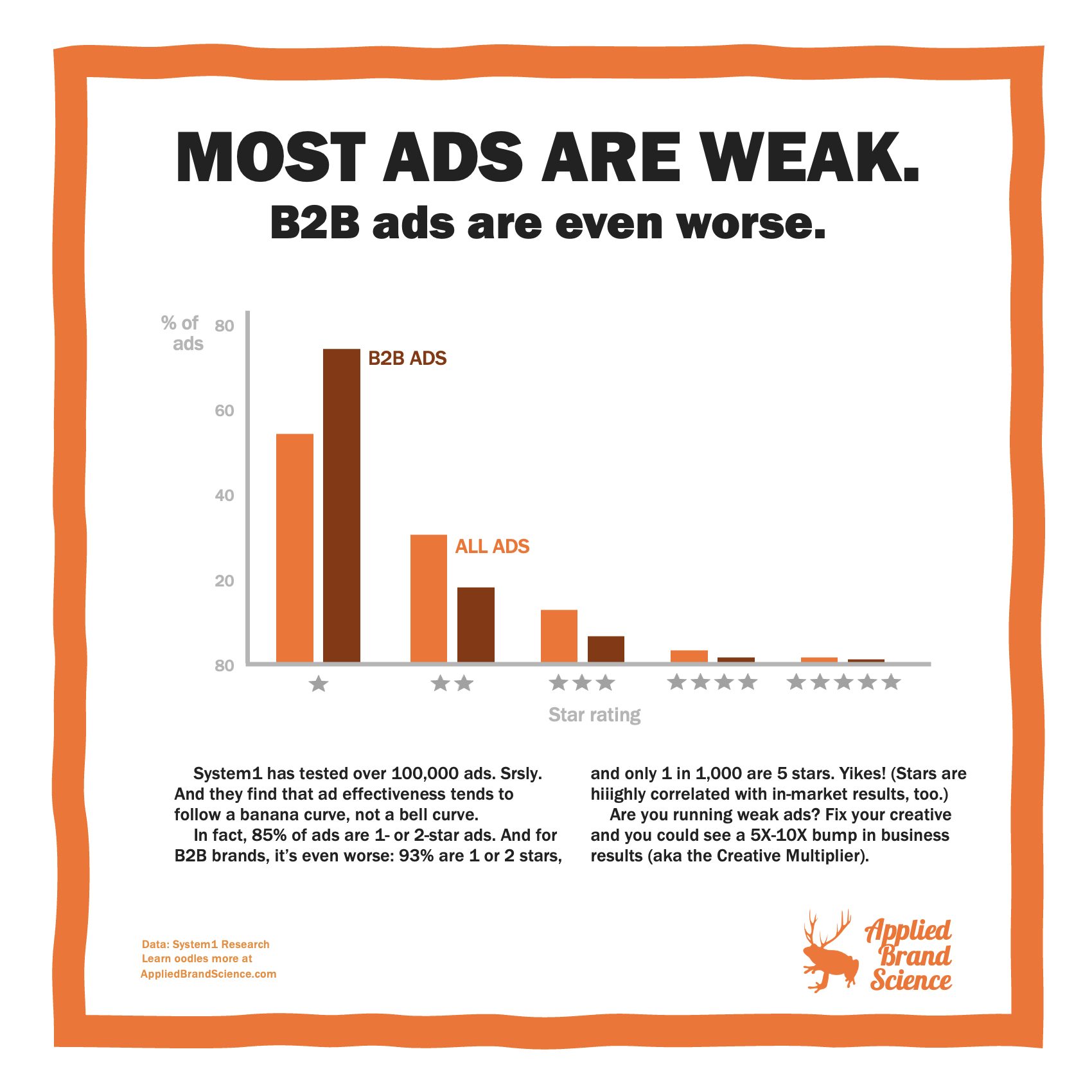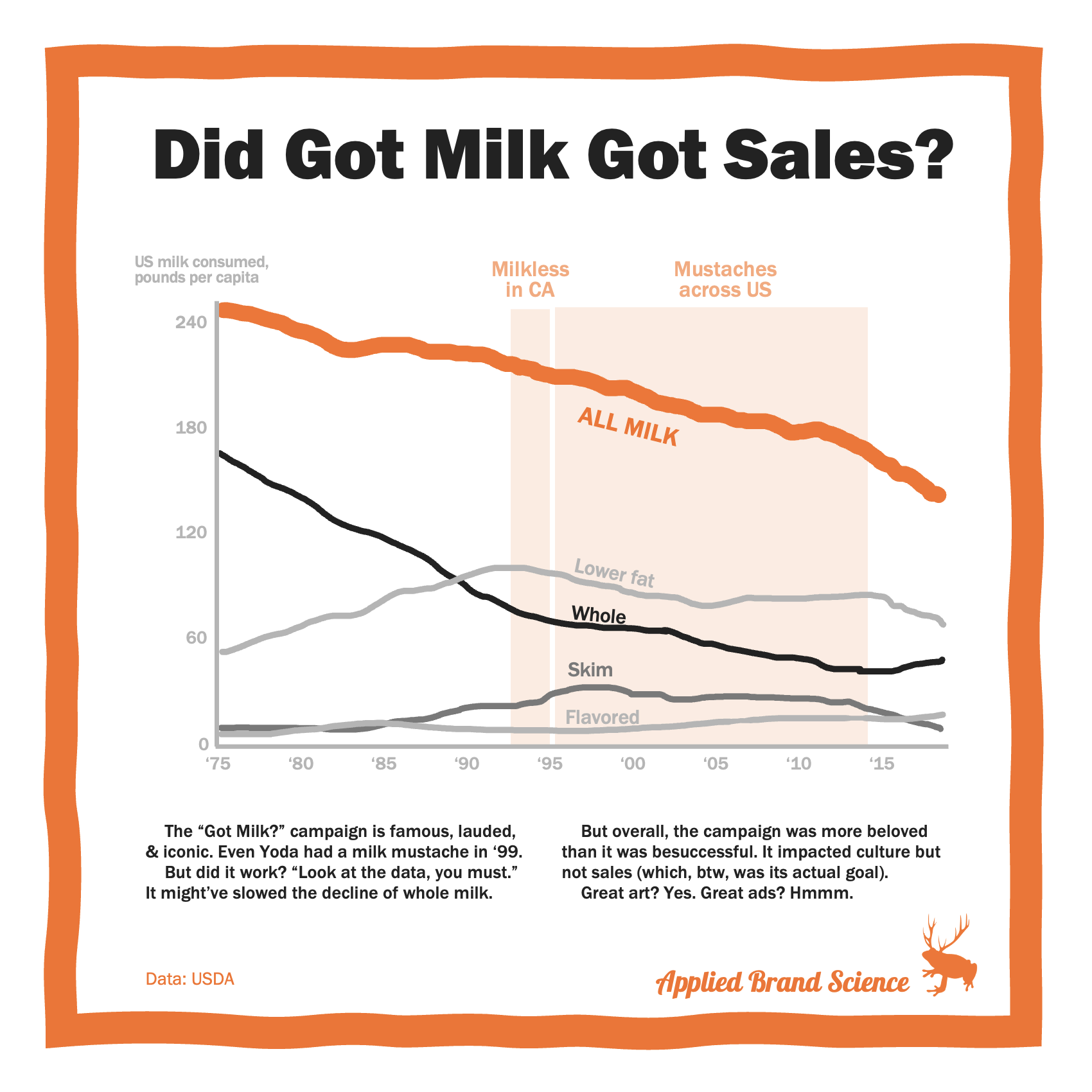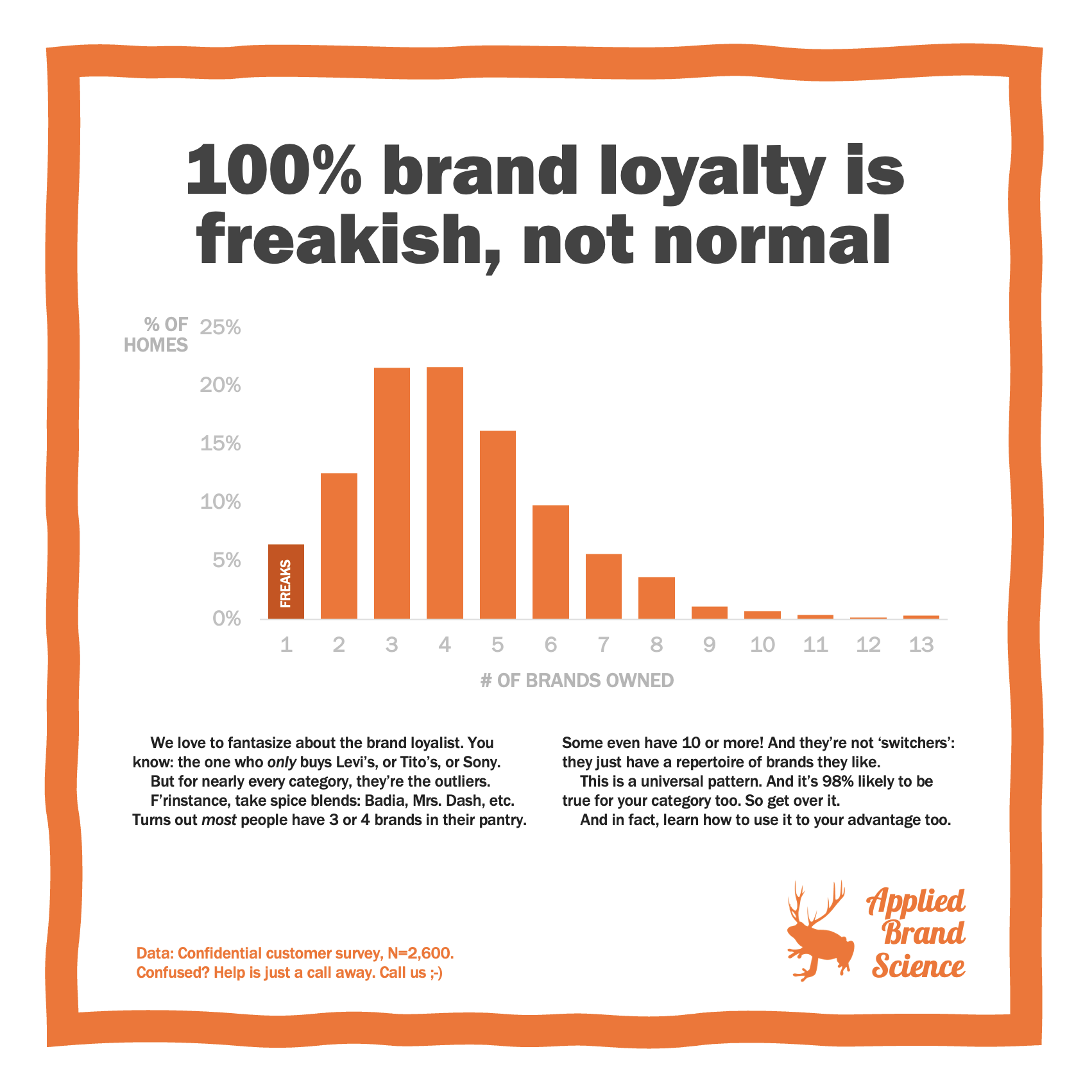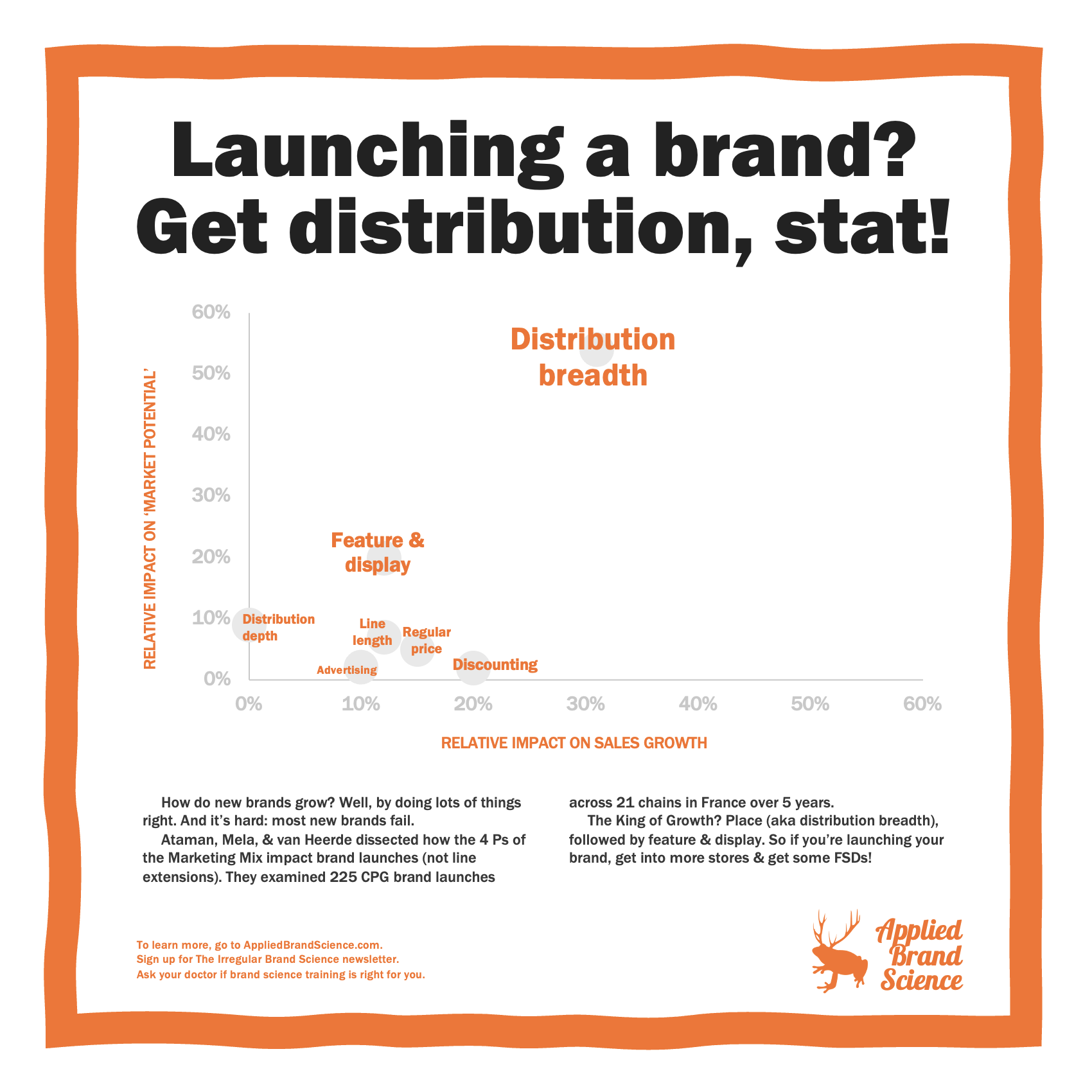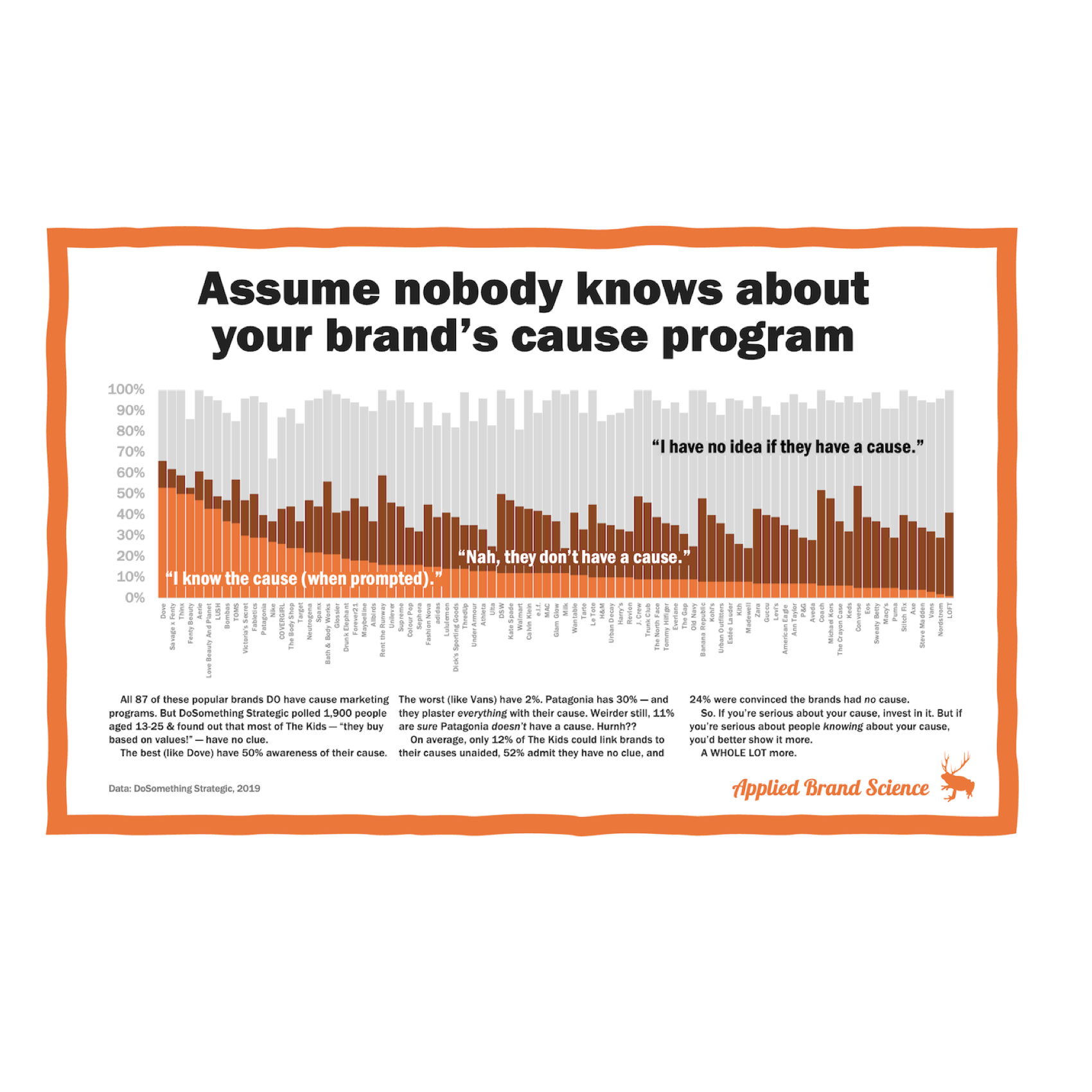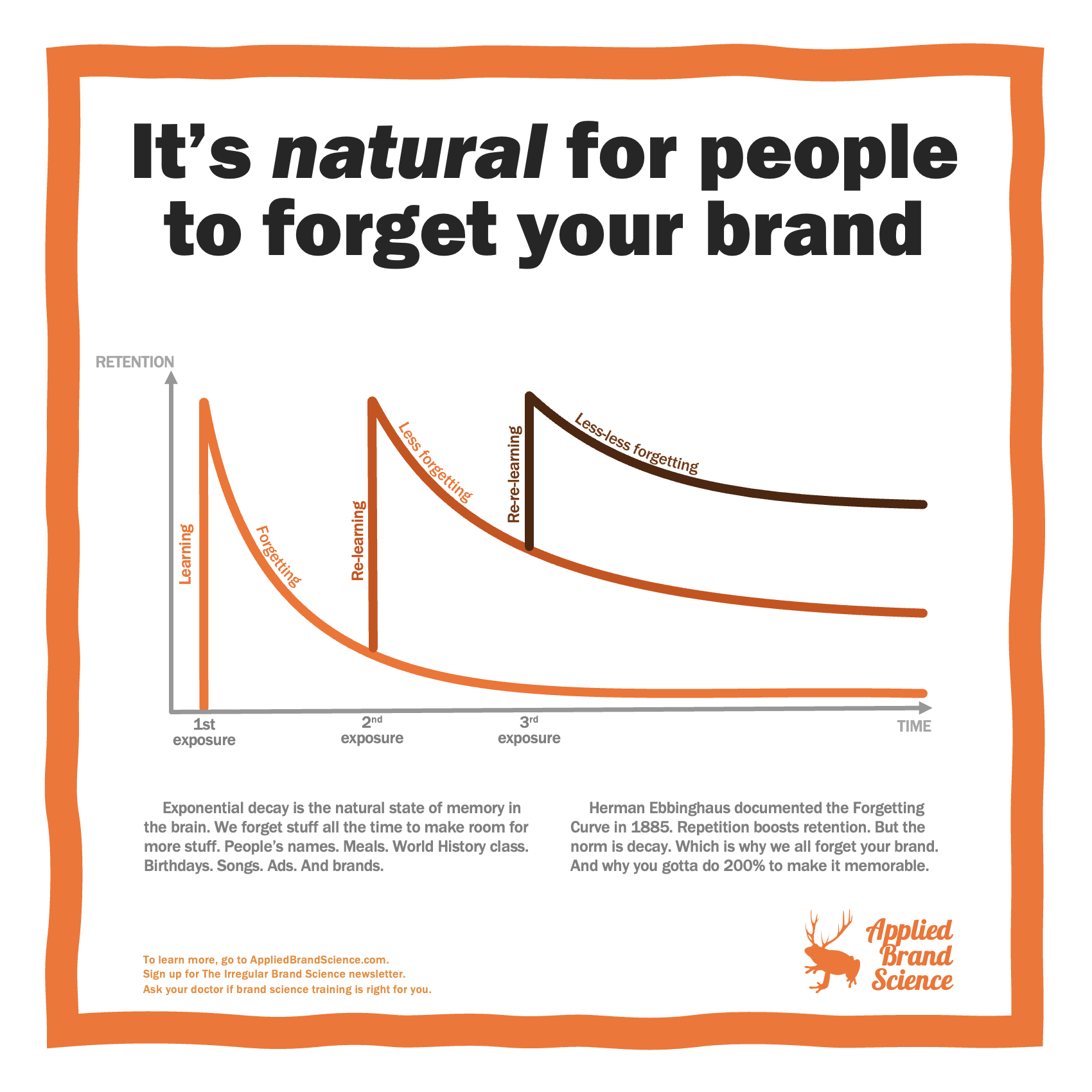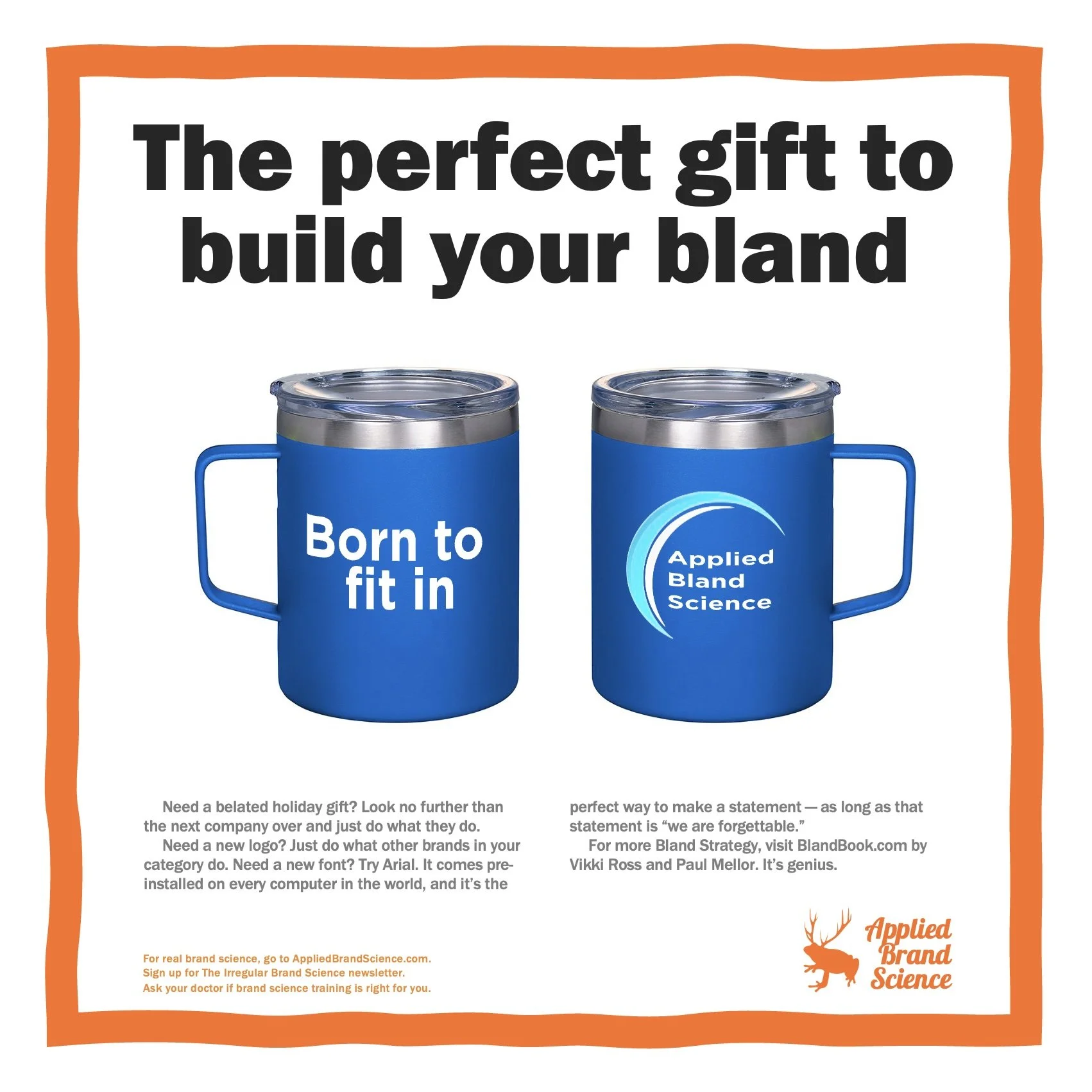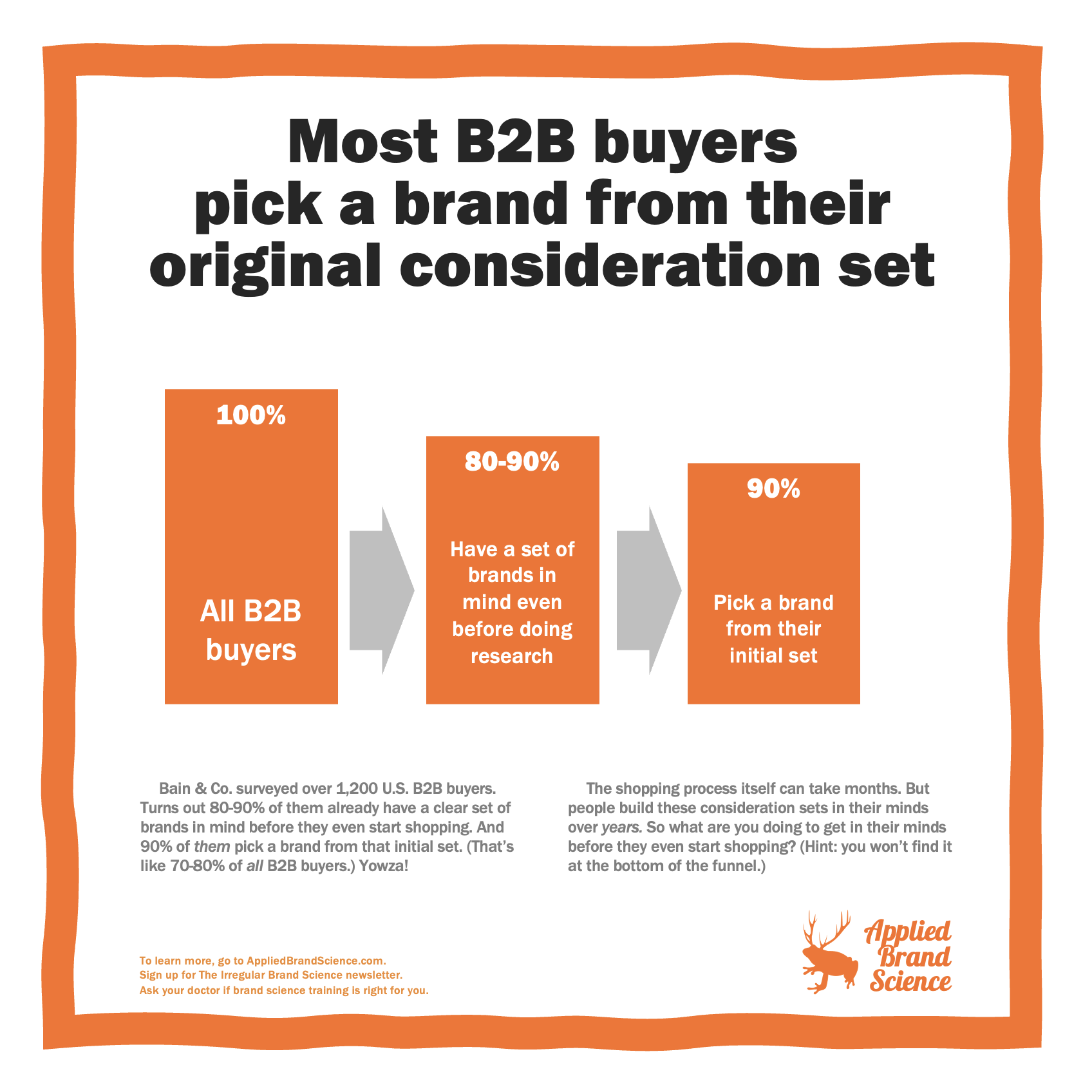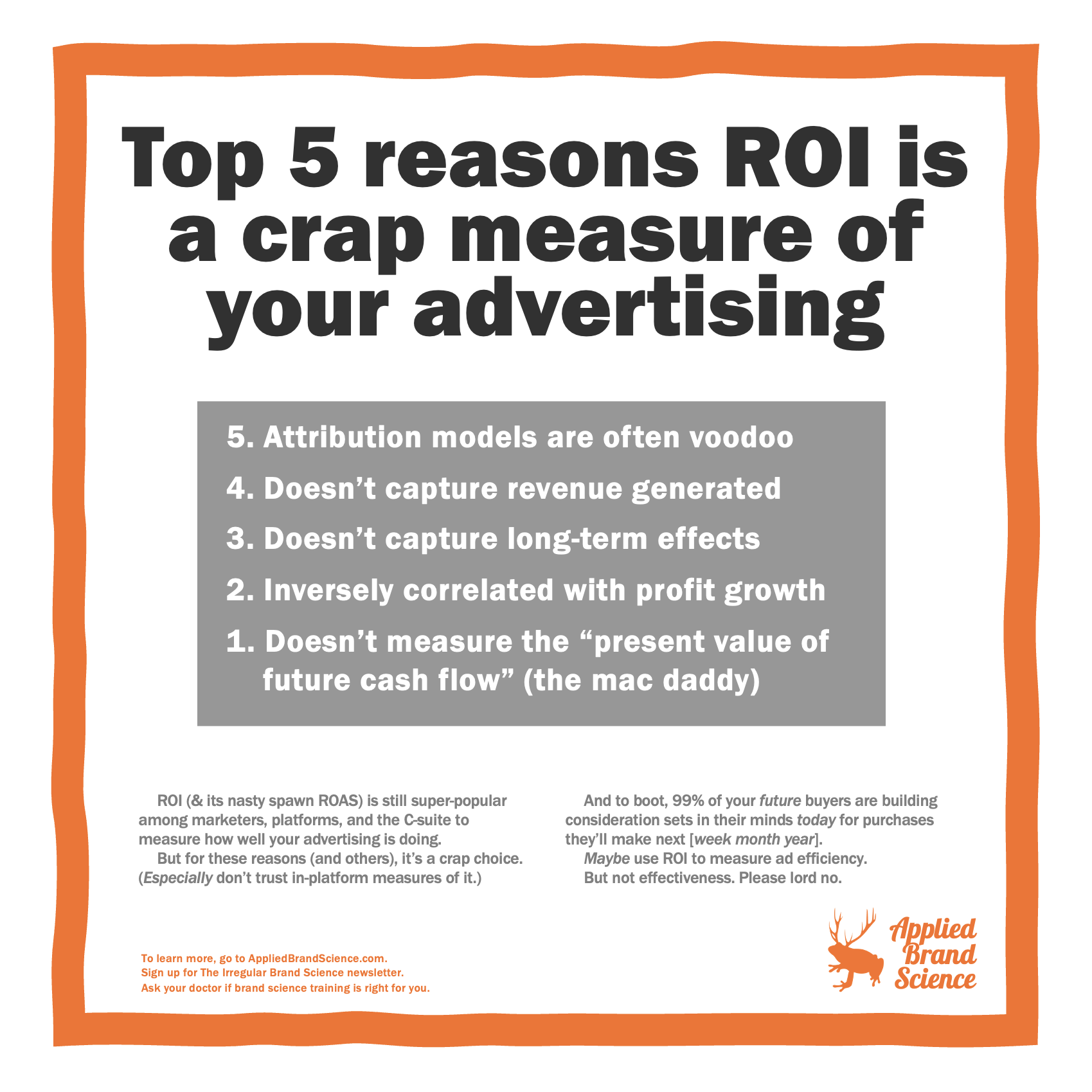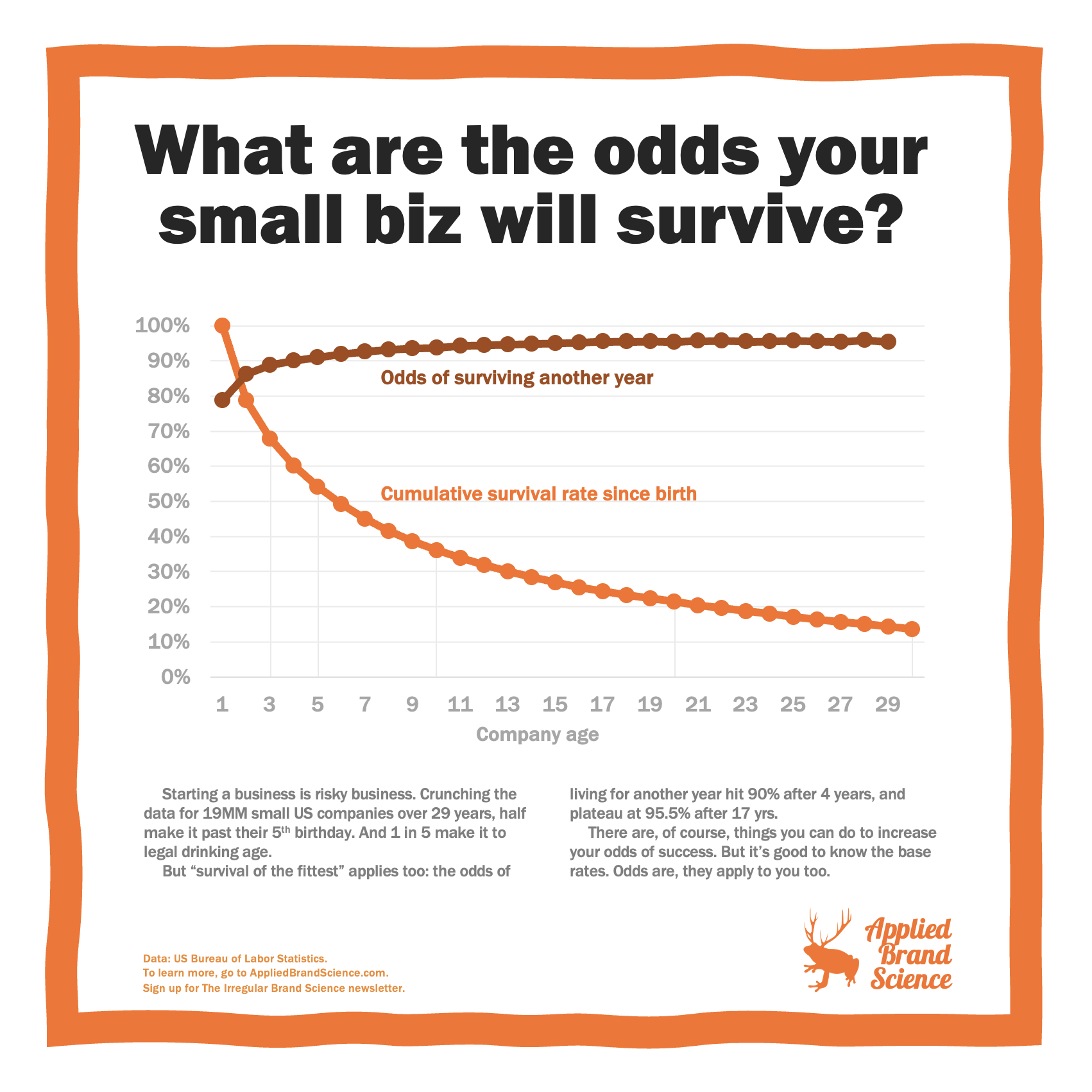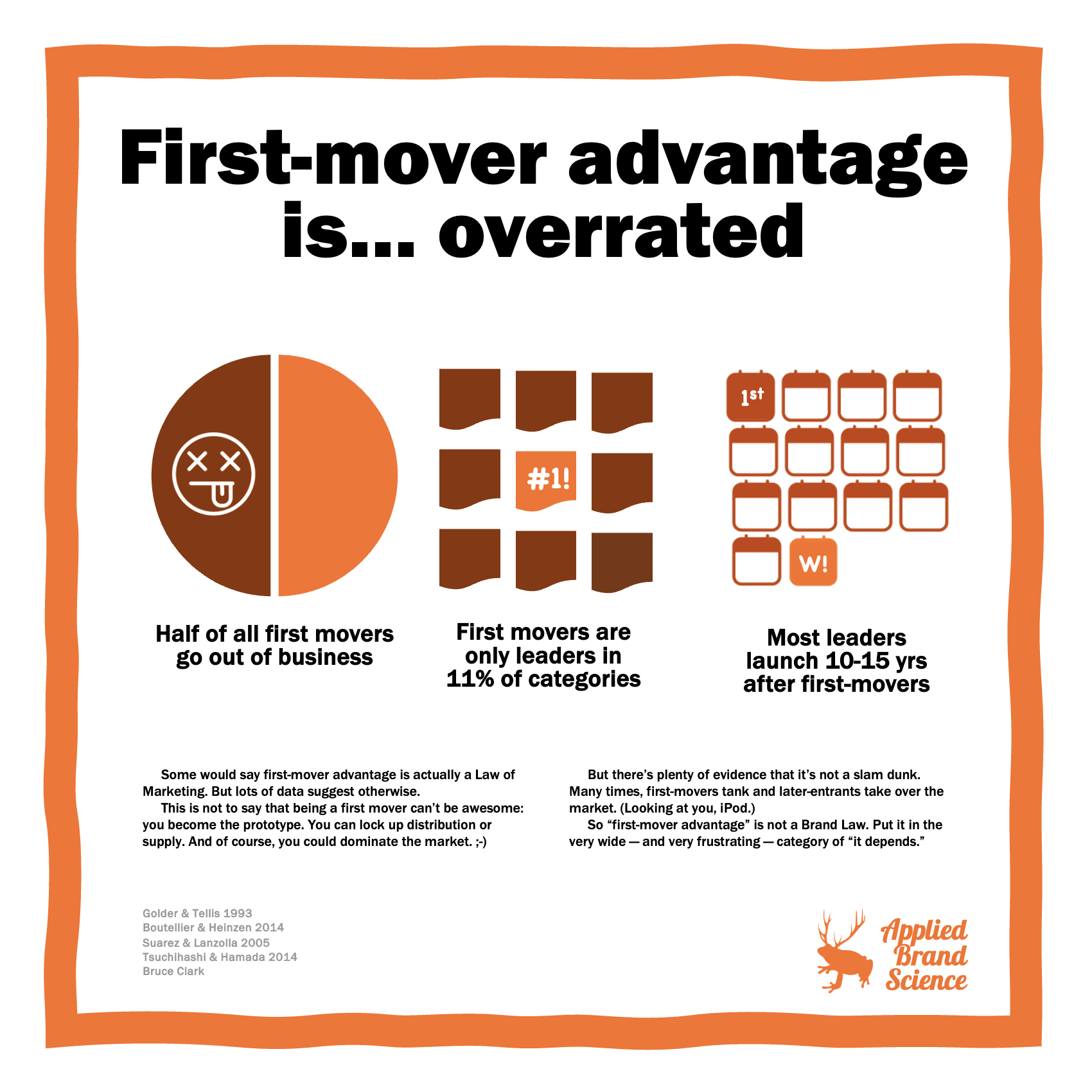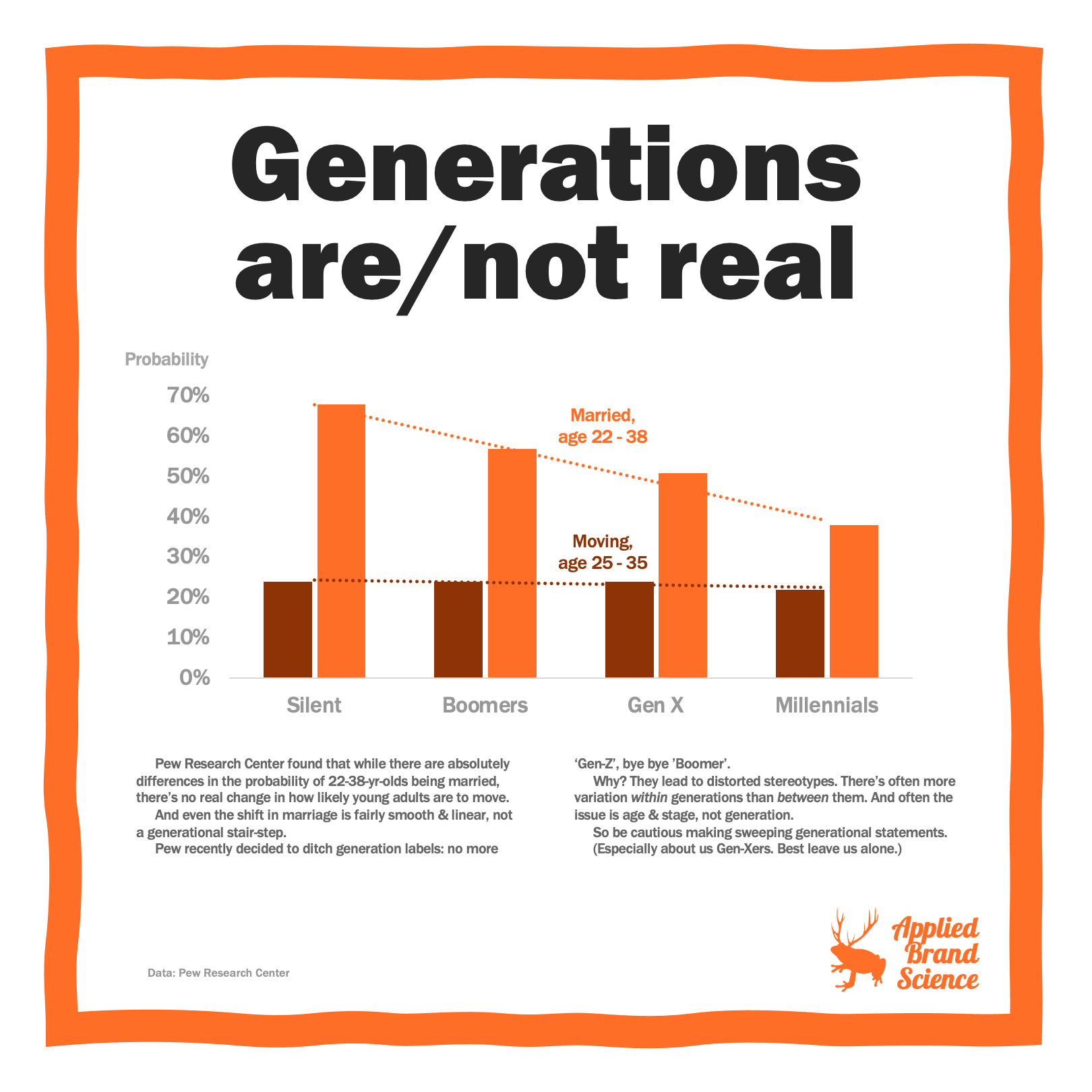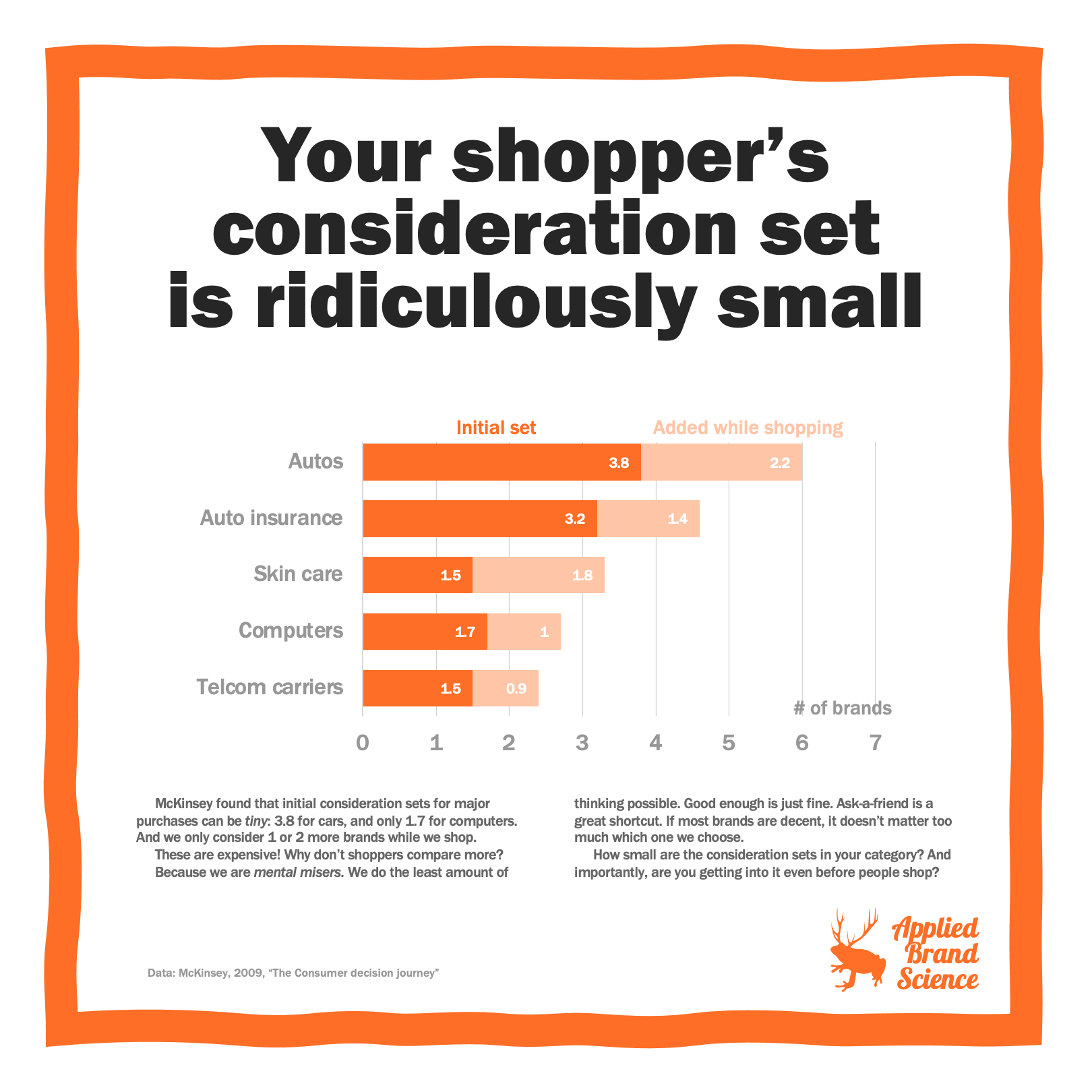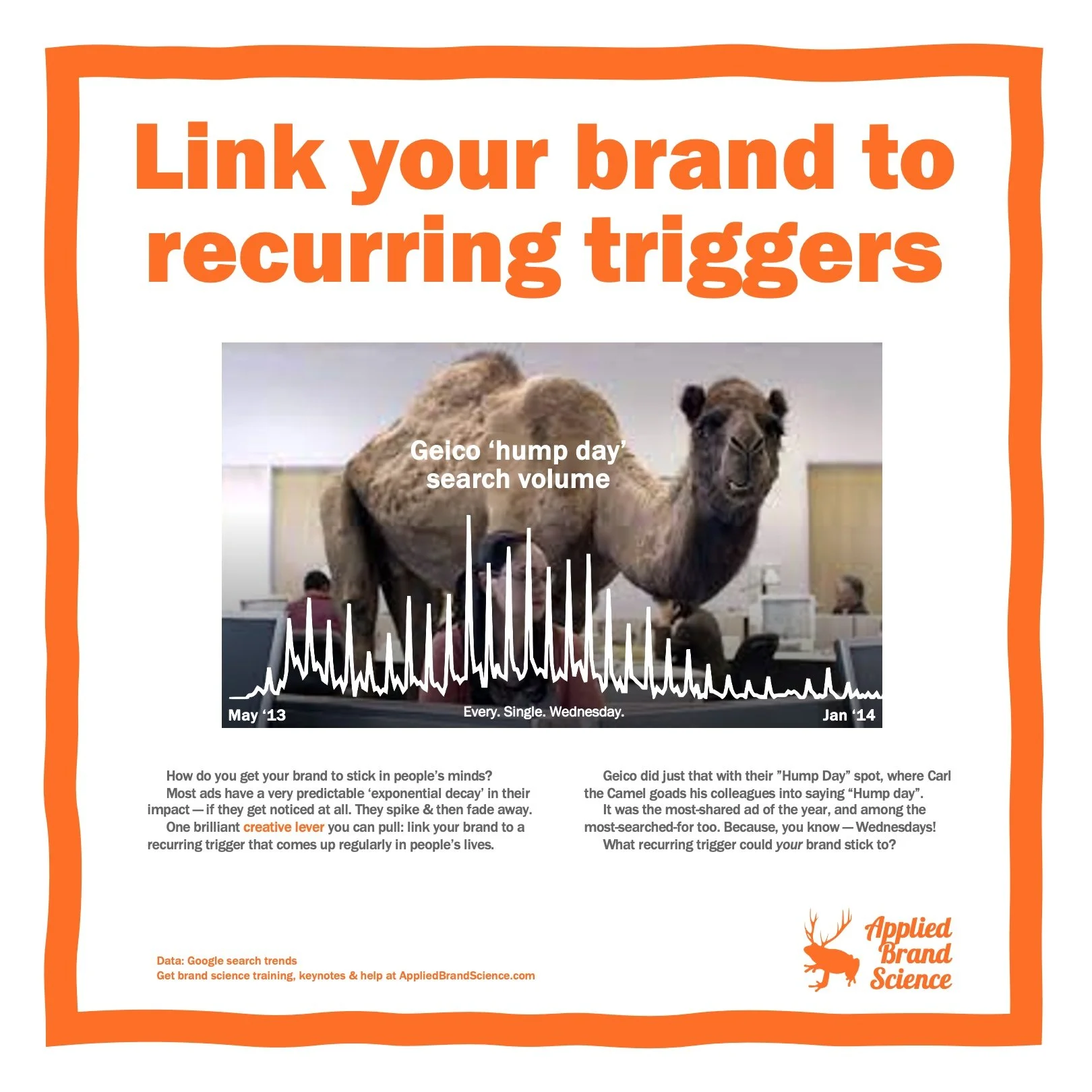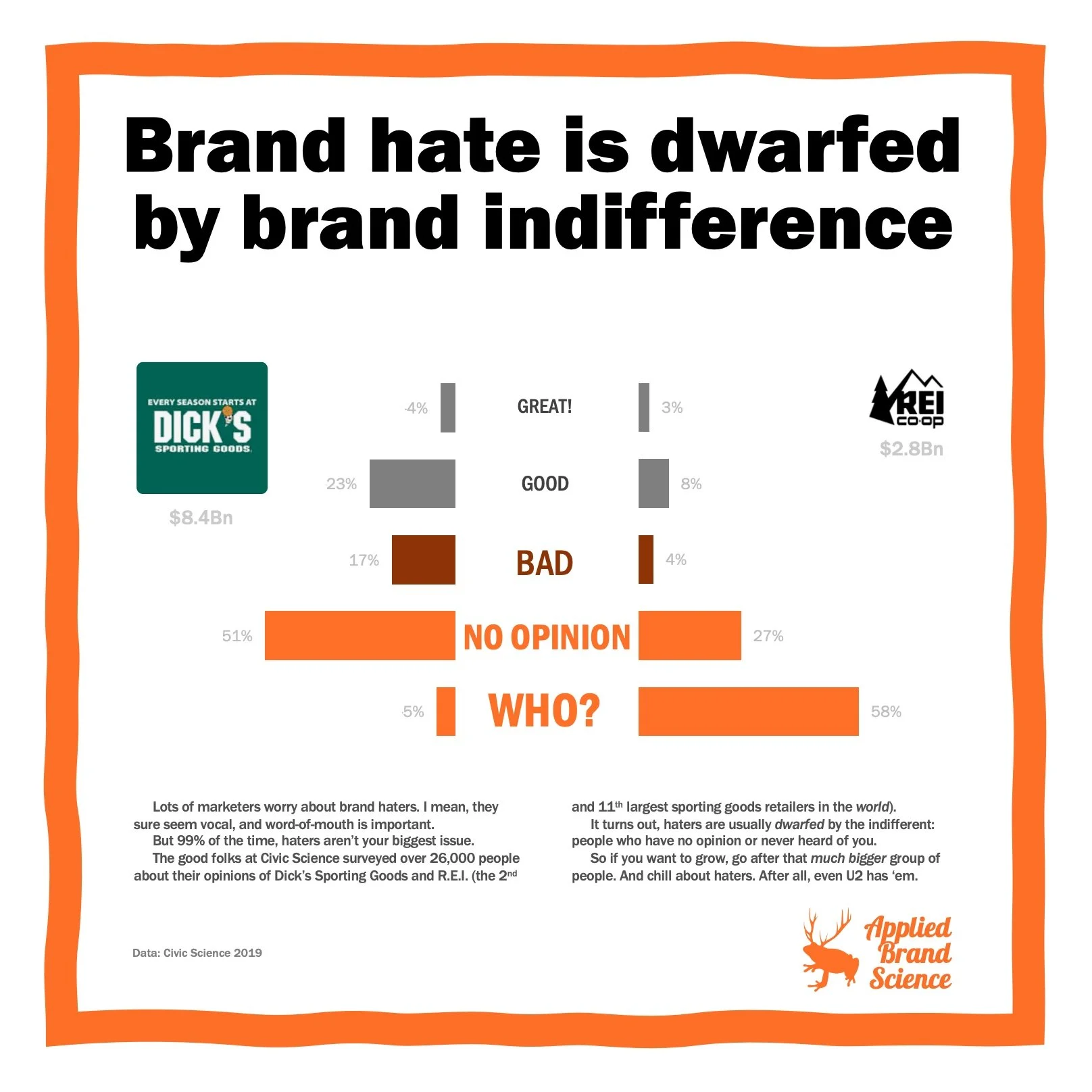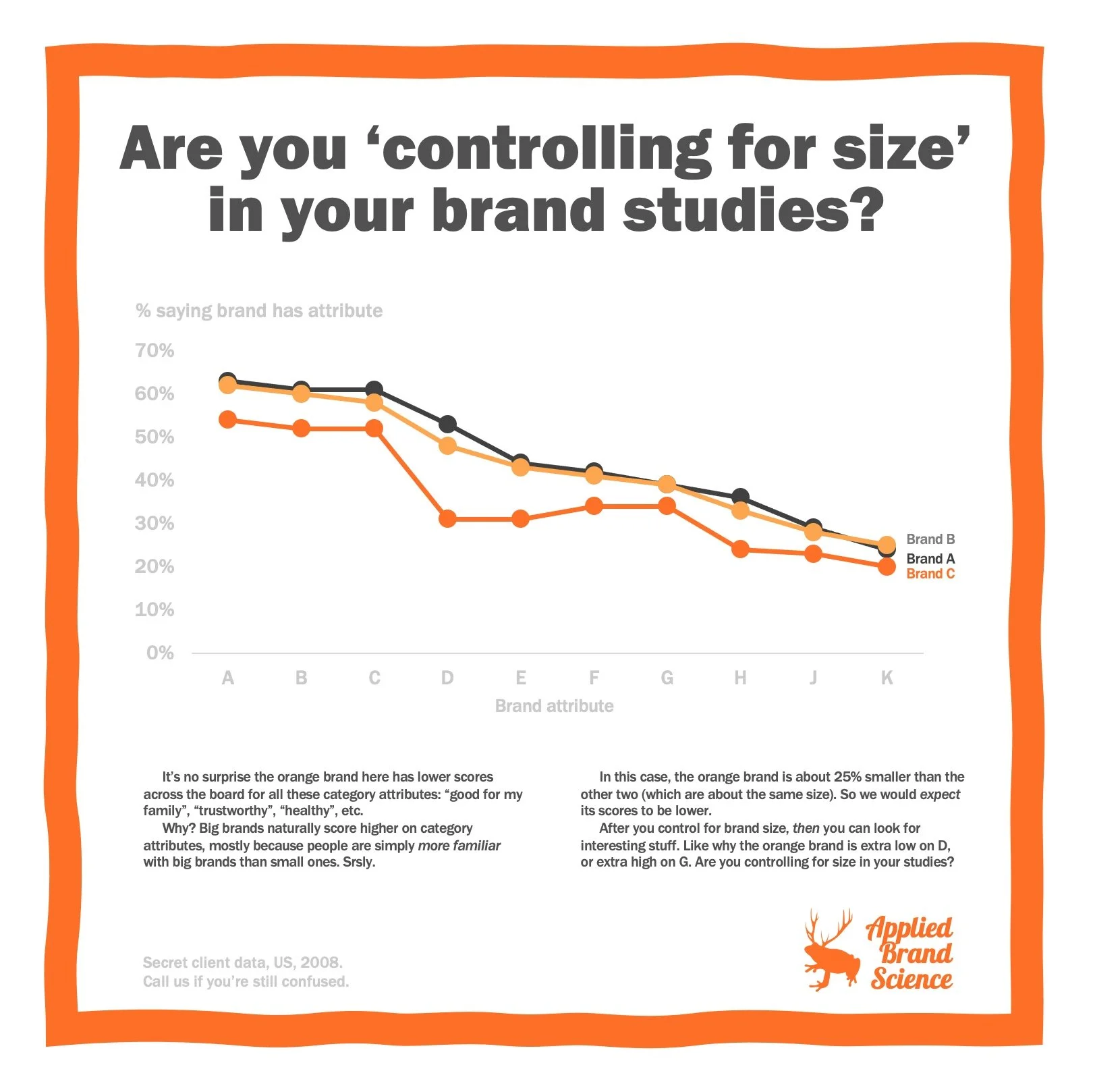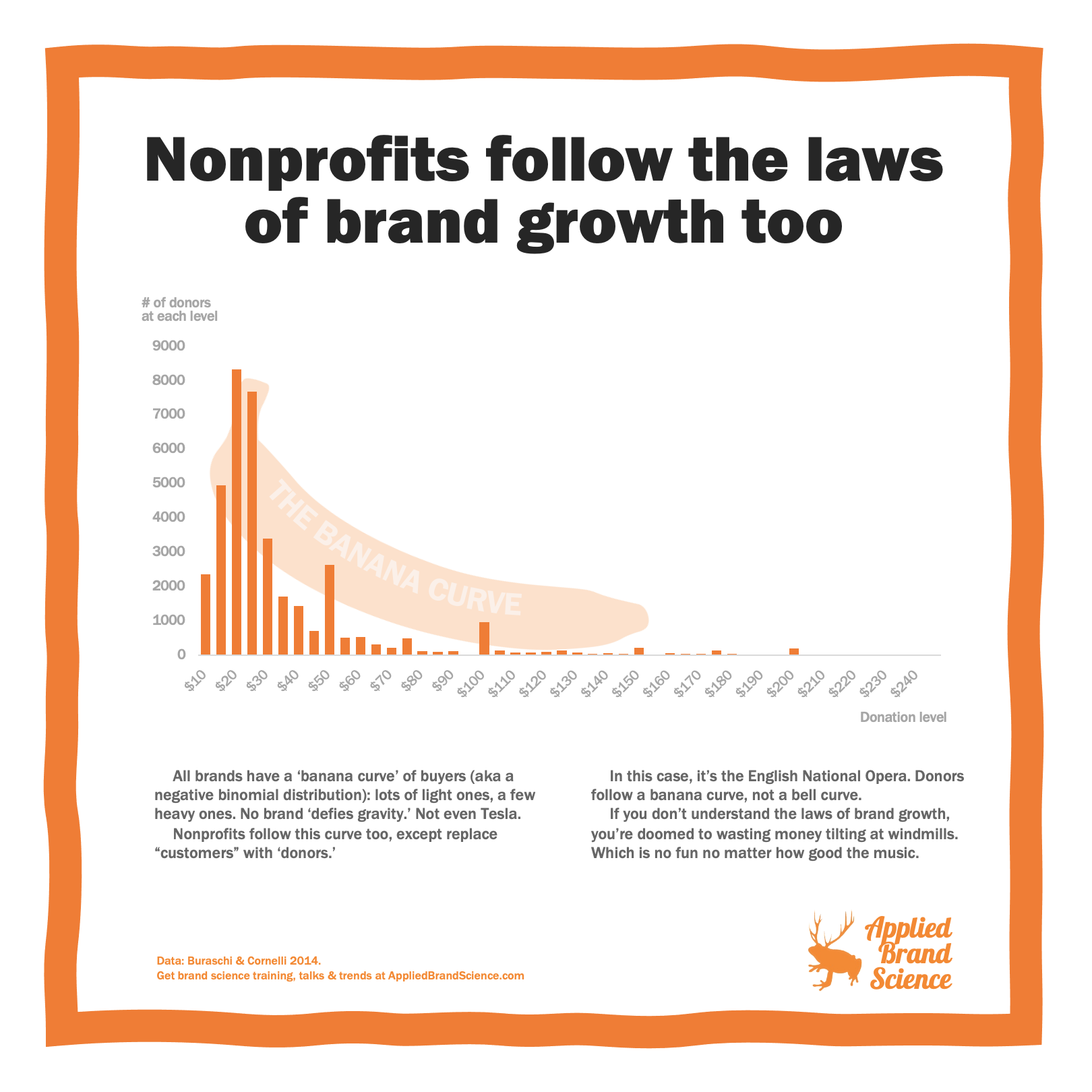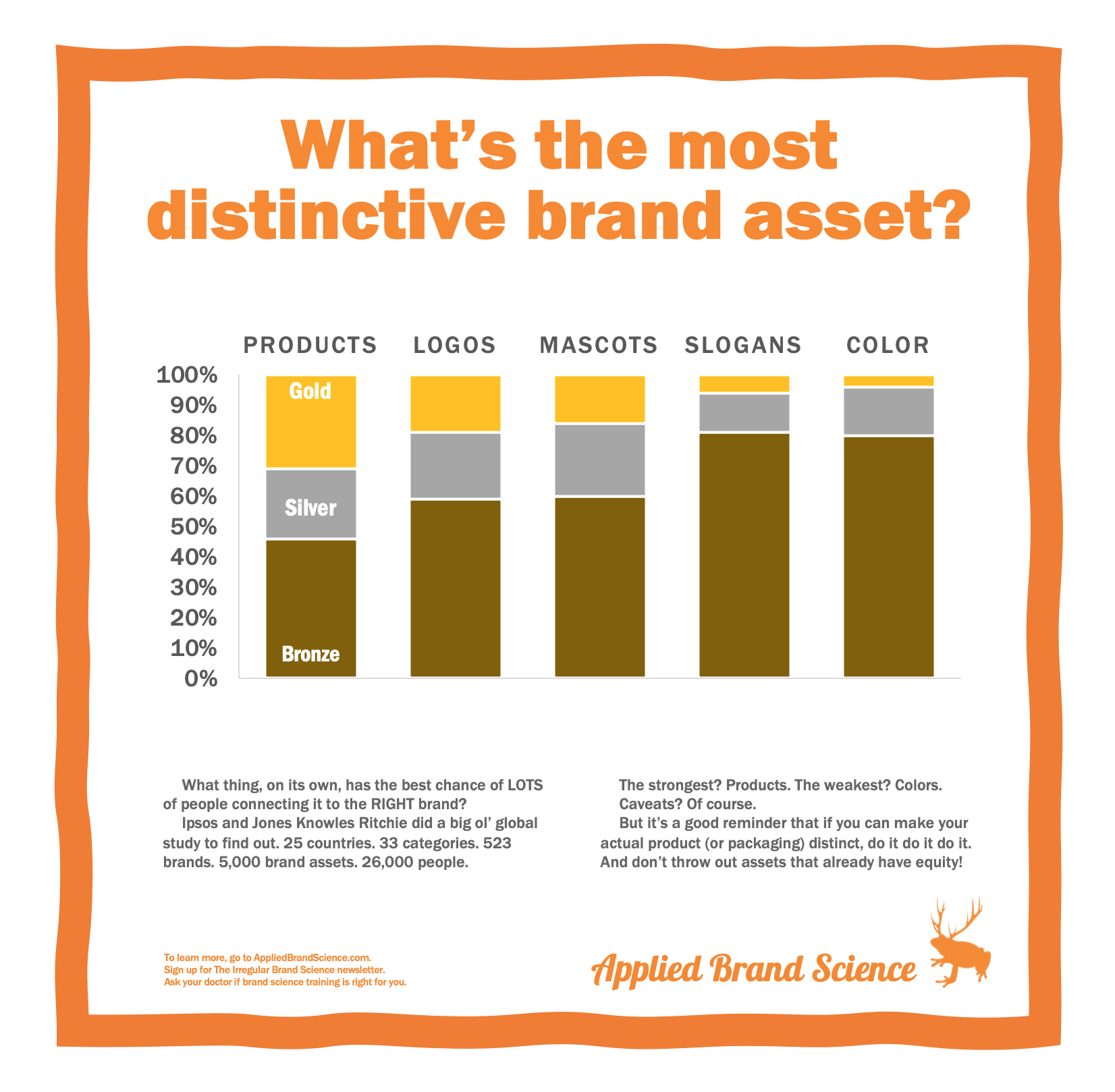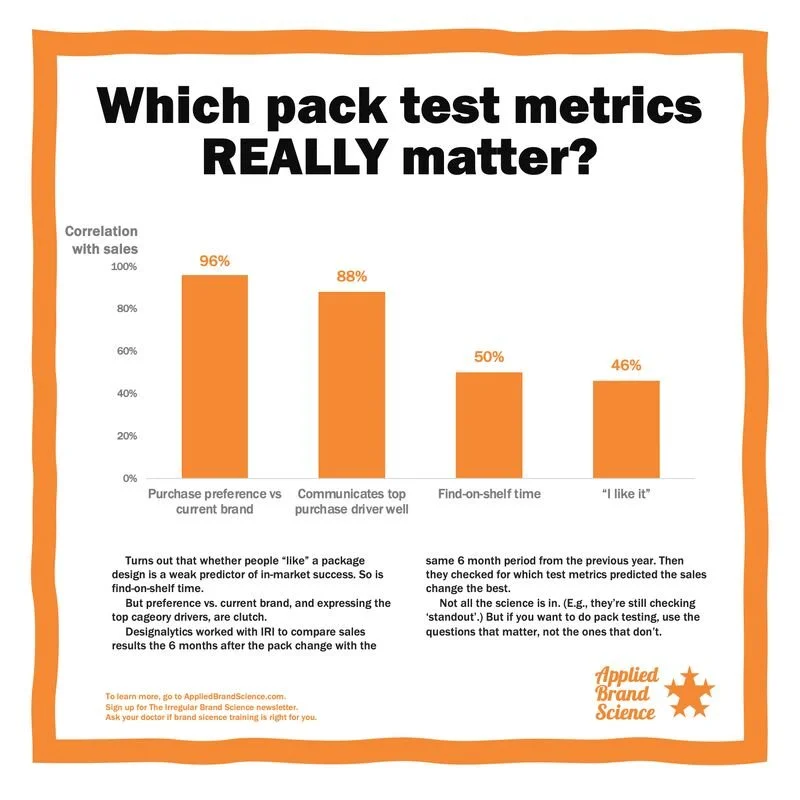
Your source for knowledge, reports, thought leadership, and other tomfoolery. No fluff. No folklore. Just sticky, science-backed brand truth.
The Most ABSurd Blog
Are you tracking trends for long enough?
Covid changed everything—except the parts it didn’t: business creation soared 40%, while consumer spending snapped right back to trend.
How bad is the “average” ad?
System1 tested 100,000 ads and found most are, well, bananas—lots of weak ones, almost no greats, especially in B2B.
Did “Got Milk?” Got Sales?
‘Got Milk?’ ran for decades, featured hundreds of celebs—even Yoda—but did it actually work? Look at the data, you must.
Is 100% brand loyalty normal or freakish?
We love the myth of the brand loyalist—but in most categories, those one-brand buyers are total unicorns.
What helps new brands grow the most?
Launching a new brand is hard—and a deep dive into the 4 P’s shows which ones actually drive growth.
Do people know about your cause marketing program?
Sorry, but most young consumers have no idea your brand even has a cause—DoSomething found 87 big brands shouting into the void.
Why do People Forget About Your Brand?
The first law of brand science: people forget everything—including your brand—because forgetting is literally how the brain works.
Feature: How do you make your brand fit in for the holidays?
Need a logo? Copy your competitors. Need a font? Go with Arial—the universal signal for ‘we are forgettable.’
How Much Do B2B Buyers Really Shop Around?
Bain found that up to 90% of B2B buyers already know who they’ll pick before they start shopping—so if you’re not in the mix early, you’re out.
Should you use ROI to measure your advertising?
ROI—and its sidekick ROAS—still rule marketing dashboards because they’re easy, logical, and instantly boostable, if not always meaningful.
What are the odds your small business will survive?
Starting a business is risky—half die by year five, only one in five hits 21, but if you make it past four years, survival shoots to 90%.
Is first-mover advantage a law of brand science?
Is first-mover advantage real—or just marketing mythology dressed up as science?
Is it time to ditch generational labels?
Should we stop making sweeping claims about Gen Z and Boomers? Yep—most ‘generational differences’ are really just smooth, age-old trends.
How small is your shopper’s consideration set?
McKinsey found shoppers consider shockingly few brands—about four for cars and fewer than two for computers.
What recurring trigger could your brand stick to?
Most ads fade fast—but Geico’s ‘Hump Day’ proved that tying your brand to a recurring trigger can make it pop every single Wednesday.
How much should you fear brand haters?
Marketers fear haters, but the real problem is indifference—most people don’t dislike your brand, they just don’t notice it.
Are you “controlling for size” in your brand studies?
Before freaking out over low brand scores, check your weight class—big brands always rate higher on every attribute. It’s a law of branding.
Do nonprofits follow the laws of brand growth?
Do the laws of brand science apply to nonprofits? Yep—swap ‘customers’ for ‘donors,’ and the banana curve still holds.
What’s the most distinctive brand asset of all?
Ipsos and JKR found your most powerful brand asset isn’t your logo—it’s your product itself, like Oreos, Ray-Bans, and Legos.
Which Pack Test Metrics Actually Predict Sales?
Designalytics and IRI found that when testing new packaging, ‘liking’ doesn’t predict success—but a few other metrics definitely do.

